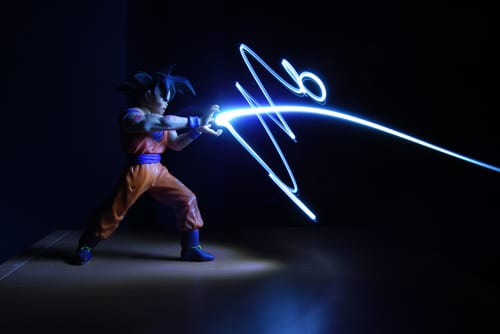Several months ago Richard wrote a Photoshop tutorial on How to Create Light Effects. I’m not a Photoshop master like Richard, and every time I look at that article, I think about creating light effects (called light painting) with my camera.
 The tutorials on this site will help you turn your 'snaps' into pictures that will delight your viewers rather than bore them to death.
Click here to find free tutorials to read online, covering all aspects of photography. There are articles on all aspects of photography and photo editing, which I have collated into eight different sections;
Equipment
The Basics
Composition
Exposure
Lighting
Color
Working with Different Subjects
Using Photoshop
If you are new to photography and are not sure where to start, I recommend you begin at the beginning.
There are a growing number of video tutorials on various aspects of photo editing for you to watch. They are suitable for both beginners and more advanced photographers.
If you are not a big reader or just want a 'quick fix' solution to a problem, try the Top Ten Photography Tips page first.
Learn Digital Photography with Geoff Lawrence
I have recently compiled my first eBook, Learn Digital Photography with Geoff Lawrence which is available for download in PDF format, so you can read at your leisure on your computer or tablet.
If you get bored with just reading, try your luck in the Photo Quiz. It's just a bit of fun but you might learn something too.
Don't miss the members' gallery where you can see many photos taken by photographers from all around the world. It is developing into a friendly community where you can give and receive advice to help improve your photography. Don't be shy, upload some photos.
If you have any questions on photography related matters, visit the community forum where, after registering, you can ask anything you want.
The tutorials on this site will help you turn your 'snaps' into pictures that will delight your viewers rather than bore them to death.
Click here to find free tutorials to read online, covering all aspects of photography. There are articles on all aspects of photography and photo editing, which I have collated into eight different sections;
Equipment
The Basics
Composition
Exposure
Lighting
Color
Working with Different Subjects
Using Photoshop
If you are new to photography and are not sure where to start, I recommend you begin at the beginning.
There are a growing number of video tutorials on various aspects of photo editing for you to watch. They are suitable for both beginners and more advanced photographers.
If you are not a big reader or just want a 'quick fix' solution to a problem, try the Top Ten Photography Tips page first.
Learn Digital Photography with Geoff Lawrence
I have recently compiled my first eBook, Learn Digital Photography with Geoff Lawrence which is available for download in PDF format, so you can read at your leisure on your computer or tablet.
If you get bored with just reading, try your luck in the Photo Quiz. It's just a bit of fun but you might learn something too.
Don't miss the members' gallery where you can see many photos taken by photographers from all around the world. It is developing into a friendly community where you can give and receive advice to help improve your photography. Don't be shy, upload some photos.
If you have any questions on photography related matters, visit the community forum where, after registering, you can ask anything you want.An Introduction to Studio Lighting
Studio flash heads have several advantages for the photographer because they are powerful, even the lower priced units kick out much more power that the average portable flash, and infinitely more than continuous light. This means that you can control the light in interesting ways by using umbrellas and soft boxes to diffuse the light and soften the shadows, whilst still getting a reasonable exposure at a small aperture. Flash can freeze the action (as you can see from the picture on the left), with very fast exposure times, and give you all the depth of field you need. All the head shots below were exposed at 1/100sec at f32 with the ISO set at 200. Although your portrait sitter will not move as fast as my Martini, hopefully, the pictures will be a lot sharper using flash than they will using continuous light. Studio flash heads also recycle very fast, much faster than a portable flashgun, so you can keep shooting at a fast rate, which is important when you are doing portraits.
You don't need to go for any top of the range lights unless you are going to take up studio photography for a career. The top professional gear will be bigger, more powerful and more reliable when used all day everyday, but in my experience the bottom of the range lights are certainly powerful enough for use with our DSLR cameras, and as for reliability, I have had the same lights for ten years now and would expect at least another ten years' service out of them. I have never had any reliability problems with studio flash, which is a lot more than I can say for the portable battery flashguns that I have used over the years.



No comments:
Post a Comment